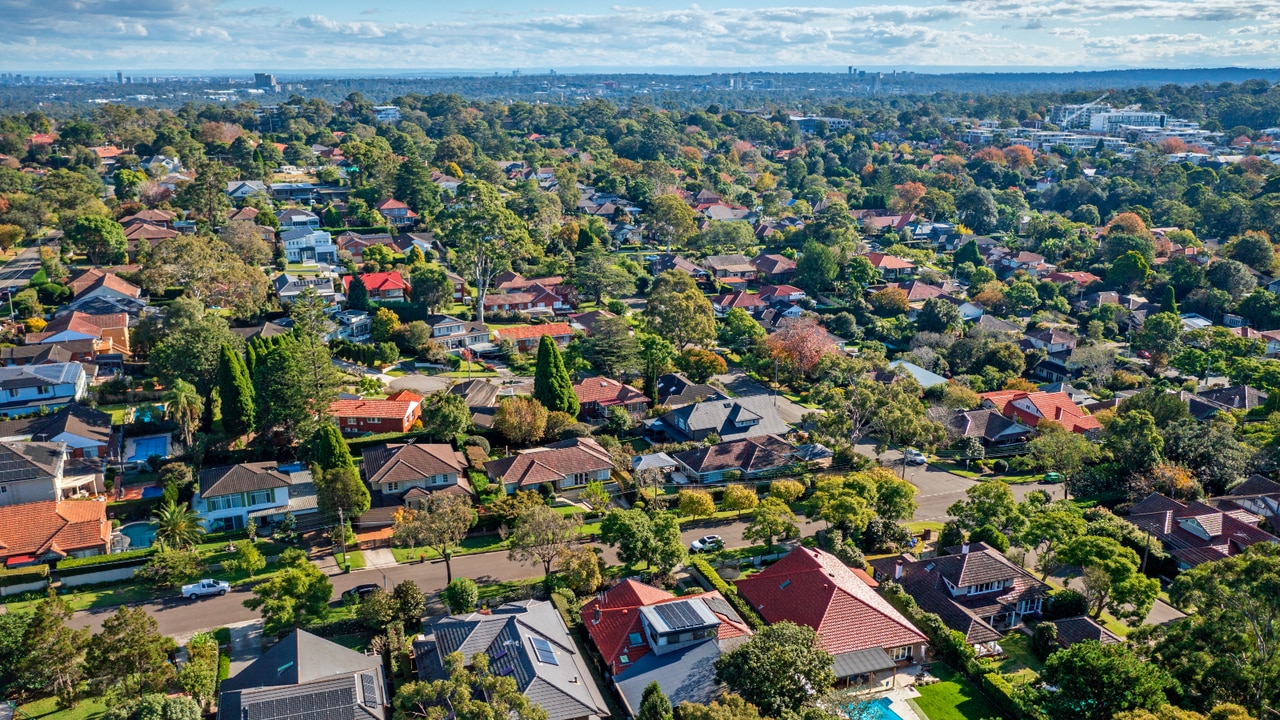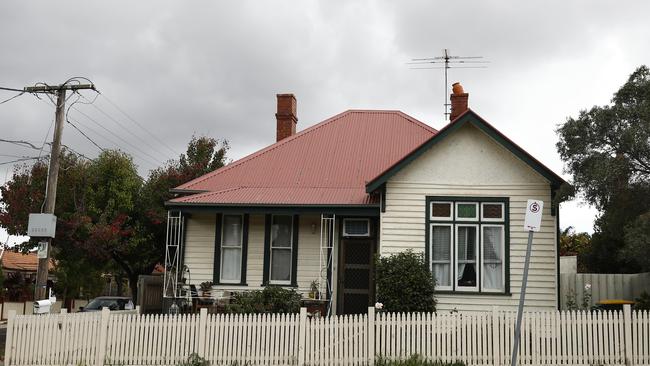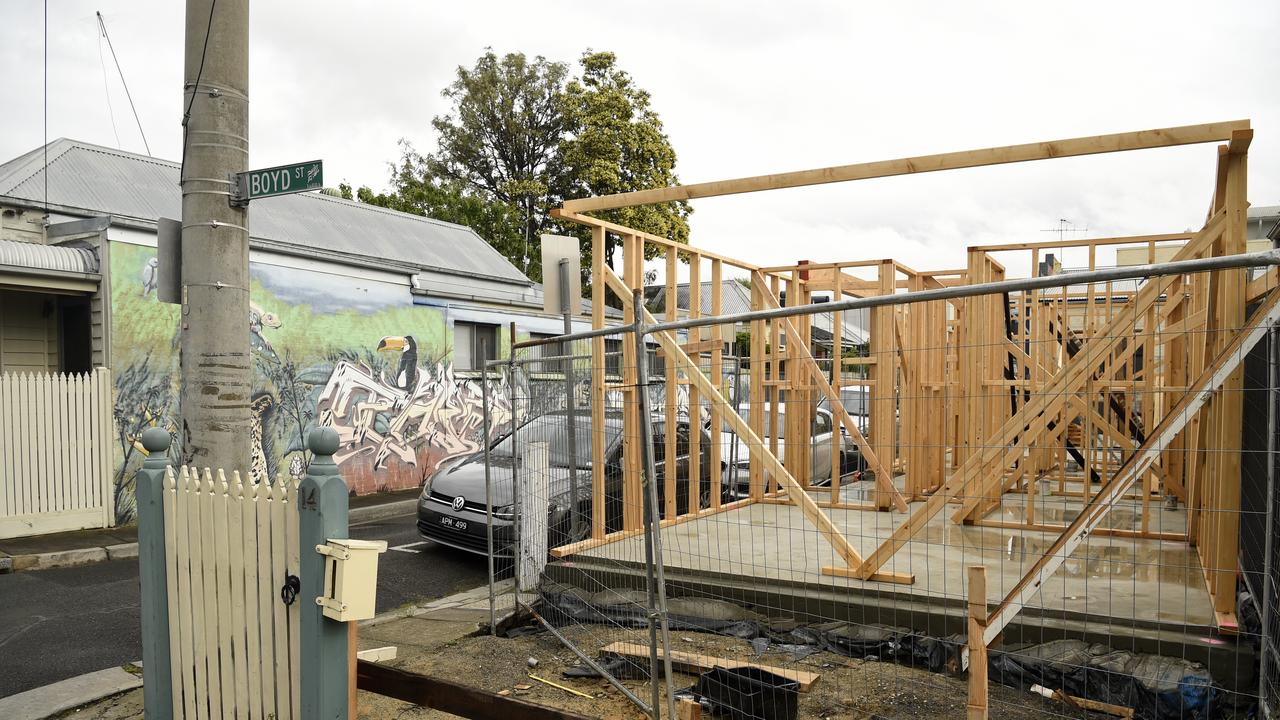462,000 Aussies could be forced to sell their home by February
Higher for longer mortgage rates are forcing more Australians to seek out hardship provisions or sell their home.

Aussie households are preparing for a tough Christmas with a record 47 per cent – about 1 in 2 – struggling to pay their home loan, as interest rates remain higher for longer.
Survey data by comparison site Finder has also found 1 in 7, or the equivalent of 462,000 mortgage holders have said they’d have to sell or apply for hardship if interest rates remained the same until February 2025.
Further still, an equivalent of 1.3 million mortgage holders would have to cut back further to keep affording their mortgage over the coming months if the Reserve Bank doesn’t cut the official cash rate of 4.35 per cent.

Finder’s head of consumer research Graham Cooke said Australian homeowners are teetering on the brink of financial crisis, burdened by soaring mortgage repayments.
“With emergency savings depleted and the RBA yet to signal significant rate cuts, many fear their livelihoods are at stake,” Mr Cooke said.
“As the new year looms, urgent relief may be needed to prevent a wave of financial hardship.”
Lower petrol prices and electricity rebates from both the federal and some state governments has reduced the nation’s headline inflation drop to 2.8 per cent in the September quarter.
This is seemingly in line with the target band of 2 to 3 per cent to see a rate reduction.
However, the central bank uses the underlying inflation rate, which came in at 3.4 per cent.
While both numbers are two-year lows, it is unlikely the RBA will be cutting the cash when it meets on Melbourne Cup day on Tuesday.
Money.com.au’s home loans expert Mansour Soltani said more than half of Australian homeowners are concerned.
“Households have been battling rising interest rates for the past few years, and many are now at the end of their tether,” he said.
“With high living costs adding further pressure, many families are just holding on, waiting for a rate cut to ease the financial strain.
“With Christmas around the corner, many Australians are having to tighten their belts even further, and unfortunately, any hopes of a Christmas rate cut have been dashed.”
Moomoo’s market analyst Jessica Amir said the markets fell as investors’ hopes for a rate cut were dashed on the latest consumer price index figures, which dropped to a three-year low of 2.8 per cent.
“Fat chance of a rate cut folks, inflation is well above the RBA’s target while unemployment is strong,” Ms Amir said.
Ms Amir said the inflation reading was a “reality check” for markets that had been talking up the possibility of an early rate reduction by the RBA.
“The devil is in the details. Trimmed mean inflation is what the RBA is preferred inflation gauge, fell exactly in line with expectations,” Ms Amir said.

For struggling homeowners Mr Cooke urged them to tighten their belts for a few months if they can.
“Reach out to your lender now to negotiate a lower interest rate and ease your financial burden before the year ends,” Mr Cooke said.
“If they refuse to lower the rate, it might be time to explore refinancing options.”
Total ownership falls
At the same time as Australians are struggling to pay off their mortgage, the number of Aussies that can even get into the housing market is falling.
Figures run by PropTrek exclusively for NewsWire shows the number of Aussies who are in a house remains pretty similar to a decade ago.

Using Census data from 2021 and comparing it to 2011, PropTrak found 29.9 per cent of Australians fully own their house, in comparison to 31 per cent.
Meanwhile, the number of Aussies with a mortgage remains nearly the same at 33.2 and 33.3 respectively.
This means that 63.1 per cent of Australians own a home compared with 64.3 per cent a decade ago.
Mish Tan, ABS head of finance statistics, said fewer Australians took out a new mortgage in September.
“The number of new owner-occupier first-homebuyer loans fell 3.2 per cent in September to 9686, which was 2.0 per cent higher than September 2023,” Ms Tan said.
The falls were led by Queensland fell 9.2 per cent, in NSW fell 3.6 per cent and in Victoria fell 0.4 per cent.
This was offset by spikes of first-home buyers in the ACT which rose by 18.0 per cent, in South Australia (1.5 per cent,) and in Western Australia (0.5 per cent).




